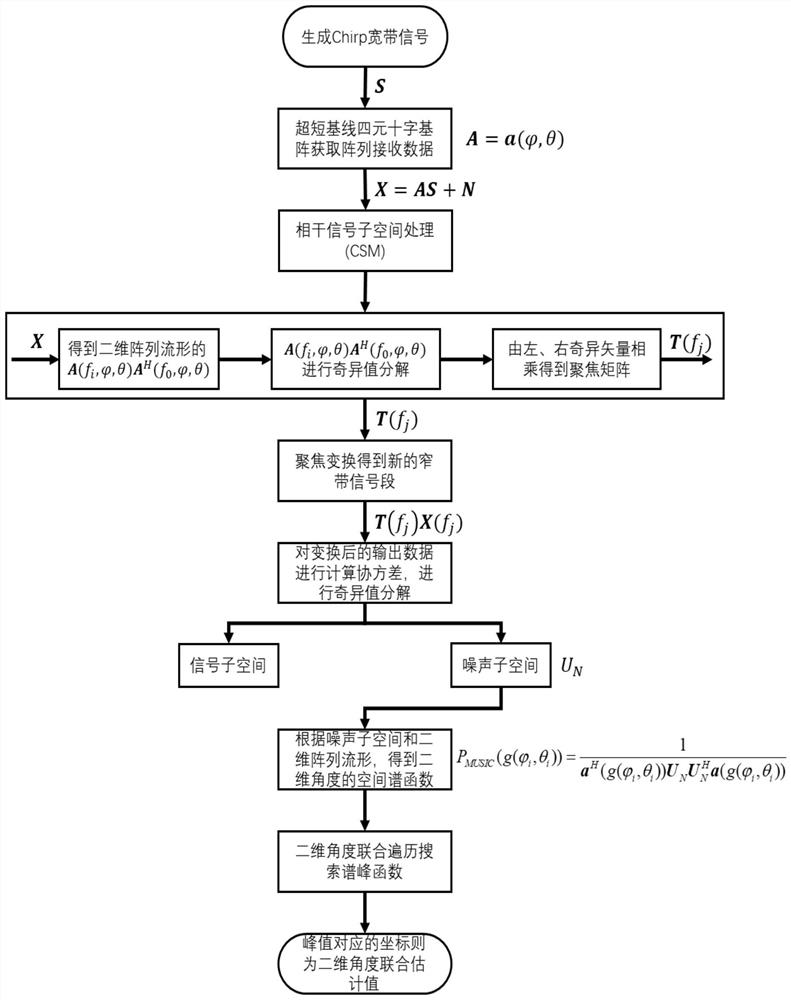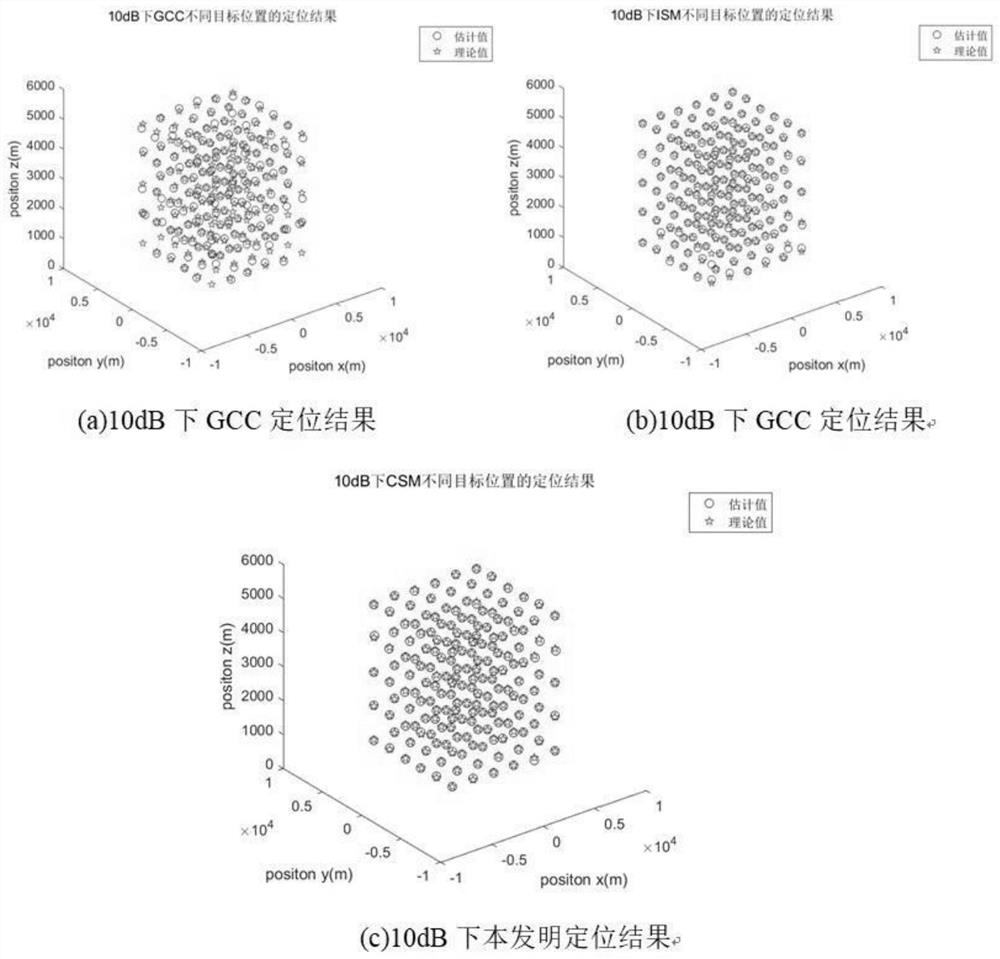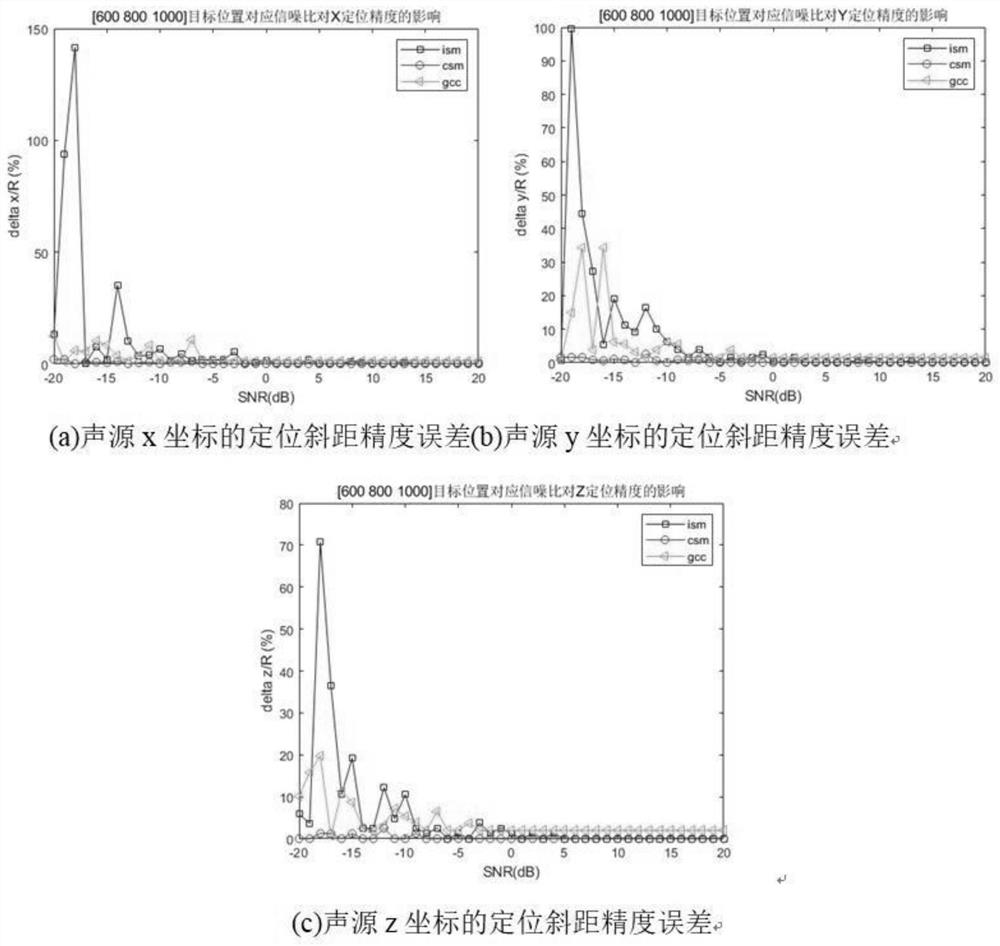Ultra-short baseline underwater sound source positioning method based on two-dimensional arbitrary array space
A technology of ultra-short baseline positioning and ultra-short baseline, which is applied in multi-disciplinary fields and can solve the problem that the orthogonality of signal and noise is not absolutely satisfied.
- Summary
- Abstract
- Description
- Claims
- Application Information
AI Technical Summary
Problems solved by technology
Method used
Image
Examples
Embodiment 1
[0073] exist figure 1 Under the experimental parameters of , example 1 uses different sound source positions from different combinations of x-coordinates, y-coordinates, and z-coordinates to perform ultra-short baseline positioning. The specific experimental conditions of its embodiment are described as follows:
[0074] The signal data transmitted from 180 positions combined by x=[-5000:2000:5000], y=[-5000:2000:5000], z=[1000:1000:5000] pass through 4 array elements respectively The composed cross-like array receiving array receives, and the elevation angle and azimuth angle of the 180 positions are calculated by trigonometric functions. The additional noise on the sensor array is formed by the superposition of Gaussian noise (background noise) on these four array elements. Experiments were carried out at a signal-to-noise ratio of 10dB.
[0075] Such as figure 2 As shown, in this embodiment, the present invention is compared with the positioning results under the delay...
Embodiment 2
[0077] In Example 2, the positioning accuracy of the present invention under different signal-to-noise ratios is analyzed experimentally. The position is fixed as (600, 800, 1000), and the corresponding pitch angle and azimuth angle are 53.1301° and 45° respectively. For the measurement of positioning accuracy, the difference between the estimated value and the theoretical value is compared with the ratio of the slope distance, which are: Δx / R, Δy / R, Δz / R. Its positioning slope distance accuracy under different signal-to-noise ratios (-20dB-20dB) is as follows: image 3 As shown, it can be seen that the positioning accuracy of the method of the present invention is lower than that of the GCC algorithm and the MUSIC algorithm under the ISM. The estimated position corresponding to the signal-to-noise ratio of the experimental part is shown in Table 2.
[0078] Table 2 The comparison of the positioning estimation position of the present invention and traditional technology
[0...
PUM
 Login to View More
Login to View More Abstract
Description
Claims
Application Information
 Login to View More
Login to View More - R&D
- Intellectual Property
- Life Sciences
- Materials
- Tech Scout
- Unparalleled Data Quality
- Higher Quality Content
- 60% Fewer Hallucinations
Browse by: Latest US Patents, China's latest patents, Technical Efficacy Thesaurus, Application Domain, Technology Topic, Popular Technical Reports.
© 2025 PatSnap. All rights reserved.Legal|Privacy policy|Modern Slavery Act Transparency Statement|Sitemap|About US| Contact US: help@patsnap.com



